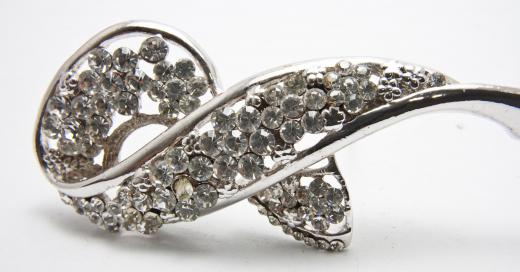White bronze is a metal that serves two common purposes. It is actually not bronze, but an alloy of varying amounts of copper, tin, and zinc. It is commonly used in jewelry as a substitute for nickel, and was used many years ago as a material for grave markers. Though it is no longer used for the second purpose, it was well-suited to that application at the time.
For jewelry, white bronze is an ideal substitute for nickel and silver because of its appearance and chemical properties. It is nonmagnetic, very smooth, and virtually nonporous. It is also highly resistant to corrosion and breakdown. It also offers one advantage that silver does not, namely, that it will not tarnish.

There are only certain situations in which white bronze can substitute for silver, however. It is not used to replace silver in jewelry made only of silver. Instead, it is used as a buffer between a base metal and gold plating in gold-plated jewelry. Electroplating is used to apply the metal in these situations. It can also be used as an undercoat in silver-plated jewelry.

Despite being inexpensive, white bronze has a very attractive appearance, meaning that in certain jewelry, it can be used as the top coat. When used as an interior barrier layer, it usually has a thickness of about 0.000039 inches to 0.0001 inches (1 to 3 microns). This is an extremely thin layer, about 1/100th the thickness of a human hair. The need to substitute white bronze for nickel, even in light of the minute amount of material used, comes from concerns about the effect of nickel on the environment.
From the 1870s through the 1910s, this metal was used as a raw material for grave markers by certain manufacturers. This type was mostly zinc, rather than the mainly tin alloy used in jewelry. It was called white bronze as a marketing ploy to make it sound more attractive. Grave markers made of this material usually took on a pale gray or pale blue appearance, and stood up to the elements better than stone markers because they were less porous. These grave markers were actually hollow, and consisted of vertical panels held together by screws at the corners. It is said that outlaws sometimes took advantage of this fact, and hid stolen goods inside the tall, hollow monuments.
